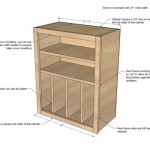Paint or Stain Wood Kitchen Cabinets: Essential Considerations for a Stunning Transformation
Transforming the aesthetics of your kitchen can rejuvenate the heart of your home. Painting or staining wood kitchen cabinets is a popular choice for a budget-friendly update. However, navigating the decision-making process requires careful consideration to achieve a successful and lasting result.
1. Assess Cabinet Condition and Material
Before embarking on your project, thoroughly inspect the condition of your cabinets. Look for any signs of damage, such as warping, peeling, or loose joints. If the damage is significant, it may be advisable to replace the cabinets rather than attempt to refinish them.
Determine the type of wood your cabinets are made from. Different woods have varying absorption and grain patterns, which will impact the appearance of the final finish.
2. Choosing Paint or Stain: Aesthetics and Durability
The choice between paint and stain depends on your desired aesthetic and durability requirements. Paint creates a solid, opaque finish that conceals the wood grain. It offers a wider range of color options and can be applied more quickly than stain.
Stain, on the other hand, enhances the natural beauty of the wood grain while imparting color. It is typically more durable than paint, as it penetrates the wood rather than forming a surface layer.
3. Surface Preparation: Key to a Lasting Finish
Thorough surface preparation is crucial for both painting and staining. This involves cleaning the cabinets thoroughly to remove any dirt or grease. Sanding the wood helps create a smooth surface and improves paint or stain adhesion.
If painting, apply a primer to the wood. This step helps ensure even paint application and prevents the grain from showing through.
4. Paint or Stain Selection: Color and Sheen
Choosing the right paint or stain color is essential to complement your kitchen decor. Consider the existing flooring, countertops, and backsplash when making your decision.
For paint, the sheen level affects the appearance and durability of the finish. Eggshell and satin finishes are good choices for cabinets, offering a balance between sheen and durability.
5. Application Technique for a Professional Result
Applying paint or stain requires patience and precision. Use brushes or rollers of high quality to achieve an even finish. Allow ample drying time between coats and lightly sand the surface before applying the next one.
For staining, apply the stain in the direction of the wood grain. Wipe off excess stain promptly to avoid blotching or unevenness.
6. Protecting Your Finish
Once the paint or stain has dried, protect your finish with a clear sealant. This helps prevent scratches, stains, and fading, ensuring the longevity of your newly refinished cabinets.
By carefully considering these essential aspects, you can embark on a successful paint or stain project that will transform the look and feel of your kitchen for years to come.

Painted Vs Stained Cabinets Which Fits Your Style Best

Painted Vs Stained Cabinets Jm Kitchen And Bath Design

Painted Cabinets Staining Kitchen

Farmhouse Check In A What We Chose Edition Stained Wood Or Painted Cabinets Emily Henderson

Painted Cabinets Staining Kitchen

Painted Wood Cabinets Vs Stained A Questionnaire Kylie M Interiors

Painted Vs Stained Cabinets Jm Kitchen And Bath Design

Kitchen Trend Wood Stained And Painted Cabinets Home Bunch Interior Design Ideas

Paint Or Stain For Kitchen Cabinets Design Partner

Painted Vs Stained Kitchen Cabinets
Related Posts








